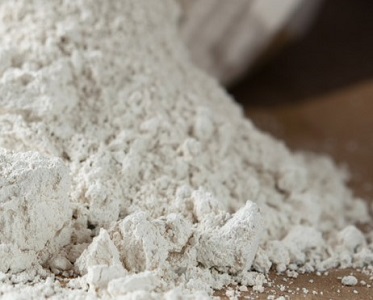November 24, 2024 – When searching for organic ways to control vegetable garden pests without harming the plants or soil, an effective tool is diatomaceous earth (DE). For those not familiar with it, DE is a chalky rock made from microscopic sea algae plants called diatoms that had silica-lined cell walls.
After death, the silica cell walls didn’t decompose, allowing them to be mined forever after, thus providing gardeners with a worry-free and non-toxic way to fight insect invasions into your garden. DE works by being abrasive on a microscopic level. Rub some between your fingertips, and it’ll feel like chalk dust or even talcum powder. It isn’t harmful to birds, animals, or fish.
The DE silica acts like tiny shards of glass which “chew” into insect exoskeletons and get into joints. The resulting “cuts” remove the exoskeleton protection, causing dehydration, and death, usually with 24 hours.
There are several types of DE. The ones you want in your garden and in your home is food grade or house grade DE. They don’t contain unwanted additives such as chemical pesticides in them.
DE is effective against fungus ants, slugs, spider mites, gnats, aphids, ants, beetles and more. It works on leaves and the soil surface for crawling insects.. Since DE doesn’t discriminate between good and bad insects, it should not be used around the flowering portions of vegetable plants. It’s fine on flowering plants in your home.
To use DE dry, make a salt-type shaker using a jar with holes in the lid, fill with DE and shake on the plant leaves and soil. For wet use, mix one tbsp of DE in a quart of water and put in a spray bottle. Weekly spray on leaves and soil or just the soil. While wet DE is ineffective, it works great when it dries.






